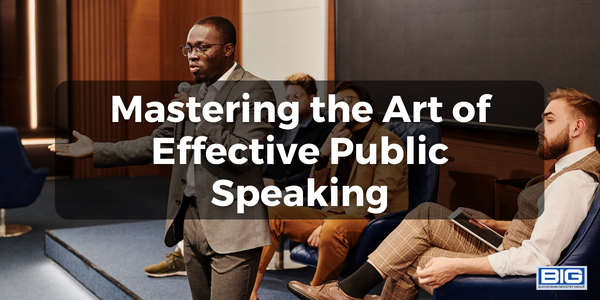
Introduction
Public speaking is a critical life skill that can have a profound impact on our personal and professional lives. Whether you’re giving a presentation at work, speaking to a community group, or delivering a speech at a wedding, the ability to communicate effectively and engage with your audience is essential.
However, for many of us, the mere thought of speaking in public is enough to send us running for the hills. Fear of public speaking is one of the most common phobias, but it doesn’t have to be that way. With practice and the right techniques, anyone can become a confident and effective public speaker.
The Power of Preparation
The first step to effective public speaking is preparation. This means doing your research, knowing your audience, and having a clear understanding of your message. You should have a clear opening and closing, as well as strong, supportive arguments and examples to back up your point.
In addition, it’s important to be familiar with the venue and equipment you’ll be using. If you’re giving a presentation, familiarize yourself with the software and any visual aids you’ll be using. Make sure you have backup materials in case of technical difficulties.
Confidence and Presence
Confidence is key when it comes to public speaking. Your body language, tone of voice, and energy level can all have a significant impact on how your message is received.
Stand up straight, maintain eye contact, and use gestures to emphasize your points. Speak clearly and at a pace that’s comfortable for you and your audience. Don’t be afraid to pause for emphasis or to gather your thoughts.
It’s also important to be yourself. Be genuine and authentic, and let your personality shine through. Your audience will appreciate the effort, and you’ll come across as more relatable and trustworthy.
The Art of Storytelling
Stories are a powerful tool in public speaking, and they can be used to make your message more memorable and impactful. Whether you’re sharing a personal story, a case study, or a hypothetical scenario, storytelling can help you connect with your audience and bring your message to life.
When telling a story, be sure to make it relevant to your topic, and try to find a way to tie it back to your main message. Stories are more effective when they’re simple and easy to follow, so keep them concise and to the point.
Incorporating Visual Aids
Visual aids can be a valuable tool in public speaking, but they should be used judiciously. Make sure that your visual aids are clear, concise, and easy to understand. Avoid clutter and keep them simple, as too many visual aids can be distracting and overwhelming.
The Importance of Diversity in the Workplace
—
The Secrets of Effective Networking
—
Top 10 Hidden Gem Job Search Bloggers
In addition, make sure that your visual aids complement your message, rather than taking away from it. Remember that the purpose of visual aids is to support your message, not to replace it.
Conclusion
Public speaking doesn’t have to be scary or intimidating. With preparation, confidence, storytelling, and the right use of visual aids, anyone can become an effective and engaging public speaker. So the next time you have the opportunity to speak in public, take a deep breath, be yourself, and show the world what you’ve got.



